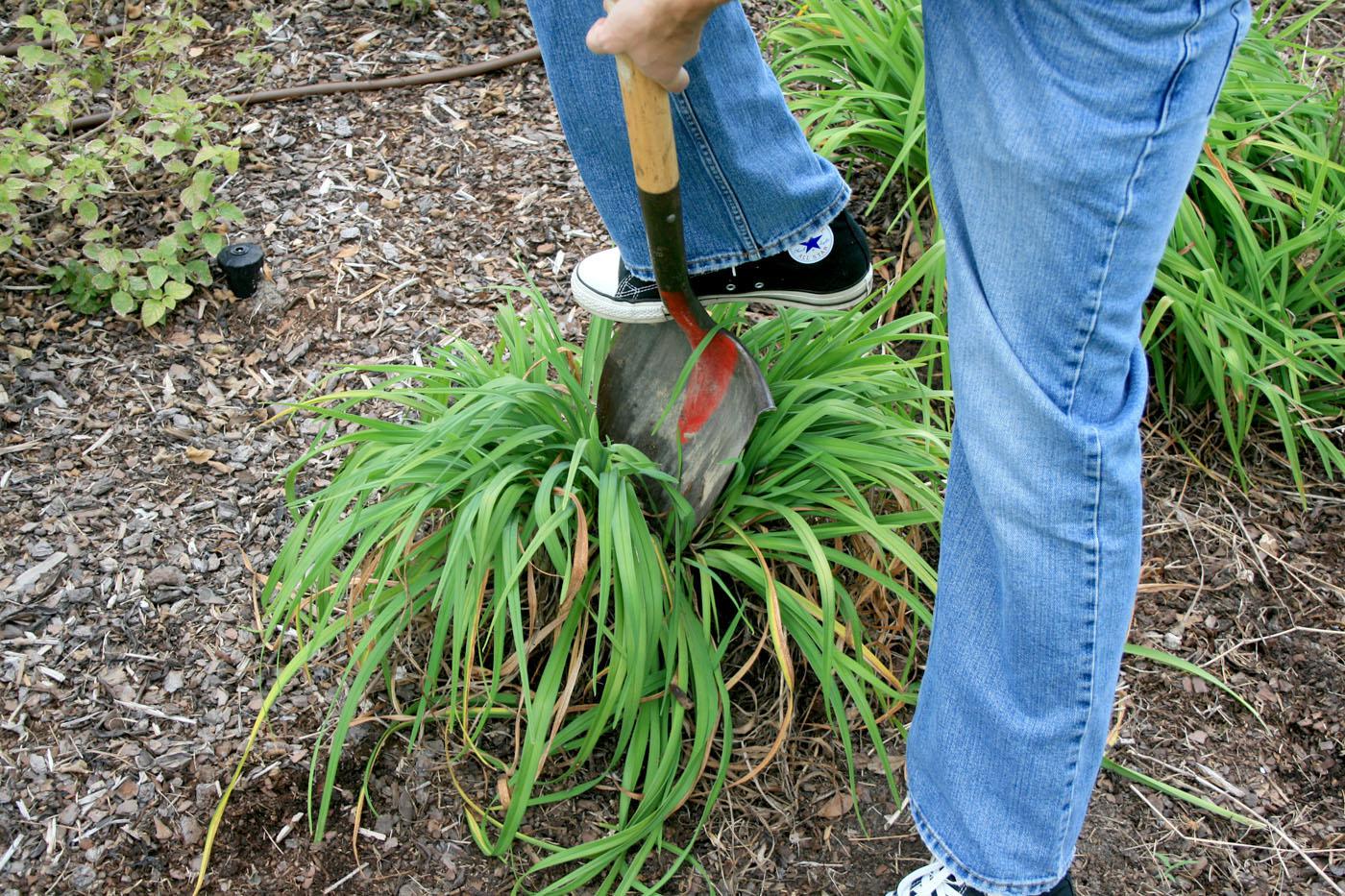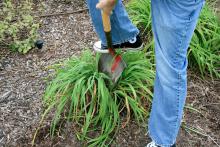Information Possibly Outdated
The information presented on this page was originally released on September 7, 2011. It may not be outdated, but please search our site for more current information. If you plan to quote or reference this information in a publication, please check with the Extension specialist or author before proceeding.
Careful fall division lets perennials thrive
You don’t have to be a gardener for long before you come across a situation that calls for some garden “surgery” called division. Division is cutting the plant into smaller pieces and replanting.
You see the need for division when you notice a perennial plant no longer looking good. Maybe it hasn't been flowering prolifically, the leaves are getting smaller or the center is opening up. You decide to divide the plant to remedy the situation. Dividing perennial plants is a great way to rejuvenate some of our ornamental garden treasures.
Dig the entire perennial out of the ground to minimize damage and allow you to make more divisions. Identify the growing points, sometimes referred to as eyes. You may have to use your fingers to feel for the spots where the division cuts are to be made.
It is easiest to cut the perennial in half and continue to half the pieces if you want more new plants. For the greatest success, be sure all divisions have a growing point and attached roots. Remember, the smaller the divided plant, the longer it will take to re-establish. If you want your plants to get re-established quickly, limit the number of divisions you take from each plant clump.
When replanting, prune off about half of the foliage. This reduces water loss as the roots begin to regenerate. Plant the crown at the same level it was growing in the ground on the original plant. Arrange the pieces in a random fashion so they don’t all grow in the same direction.
While most perennials can be divided any time of the year, typically home gardeners have the greatest success in the fall. The weather is moderating and for a while, the soil is warmer than the air. Warm soil promotes more root growth as the plant re-establishes itself.
Whenever you choose to divide your perennials, be sure to save a few to give to your neighbors. This is a great way to make new friends, and you can always visit your plants in future years in their gardens.
You do not need special tools for dividing plants, but the tools you use must be sharp. All you need to get started is a garden spade and fork, a serrated knife, such as an old bread knife, and maybe a small, pointed saw. Some perennials don’t even require tools but can simply be pulled apart by hand and replanted.
Common garden perennials that like to be divided by hand include the common yarrow, blanket flower, Coral Bells and Moss Pinks or thrift. Divide caladium and canna lilies with a serrated kitchen knife.
Certain common perennials require a little more effort and larger tools to divide them in the fall. These include purple coneflowers, daylilies, hostas, fountain grass and Black-eyed Susans.
While some plants are perfect for dividing and sharing, others are not suited for this. Even if they are growing in your garden, buy new specimens rather than try to divide common lavender, Russian sage or rosemary.








